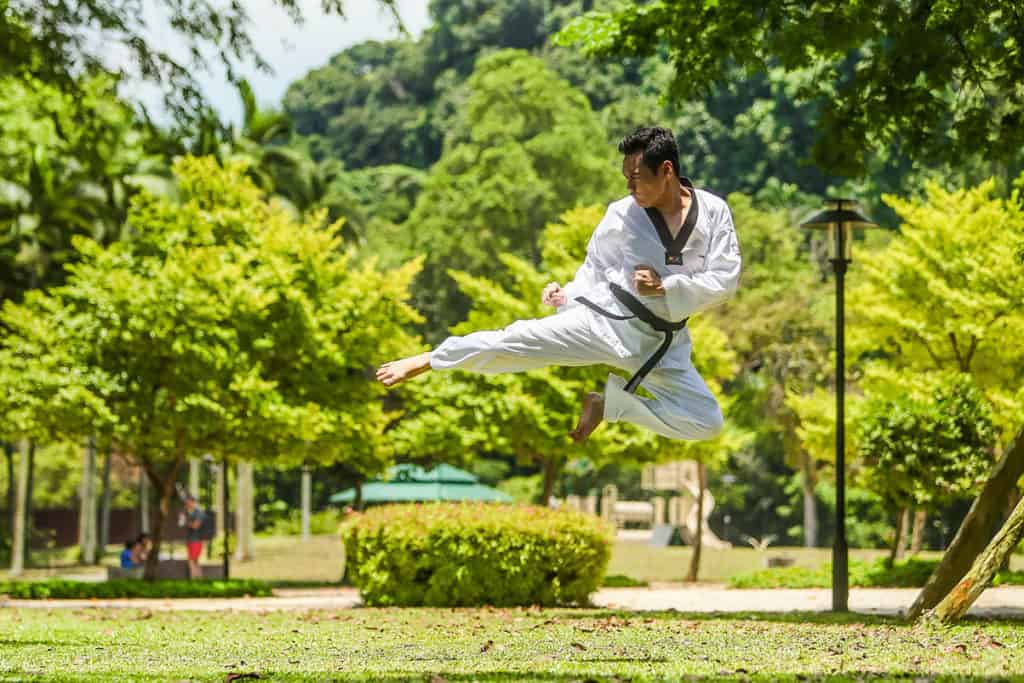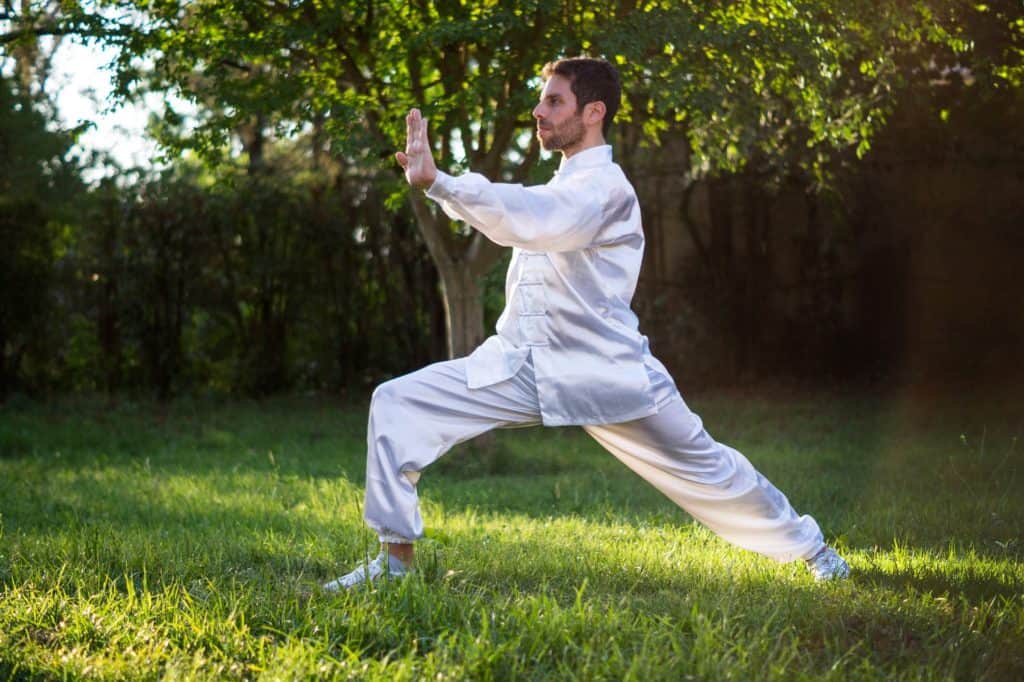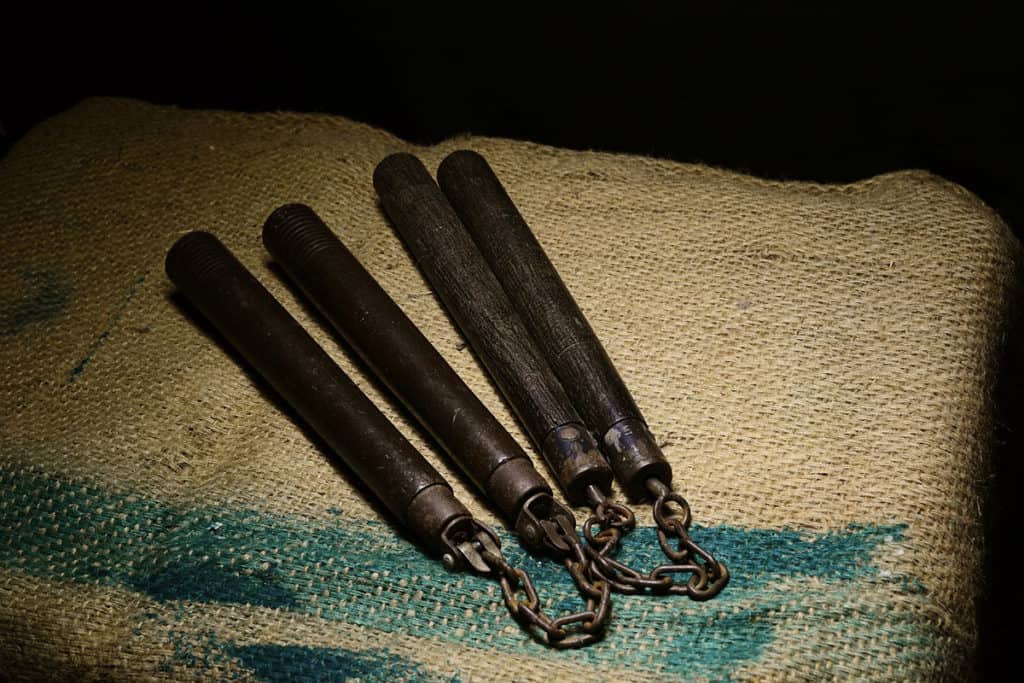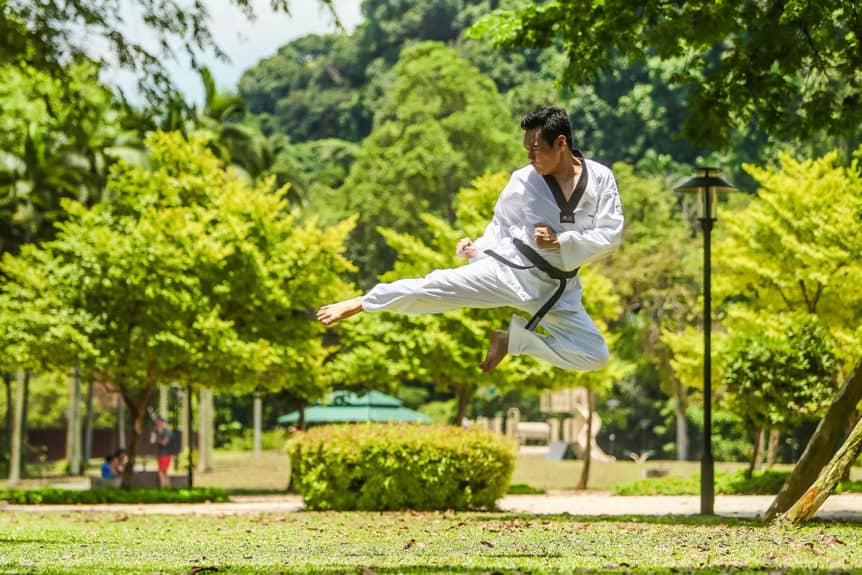
Martial arts are more than just punches and kicks—they’re a path to discipline, respect, and personal growth. Whether you’re drawn to the high-flying kicks of Taekwondo or the fluid, diverse styles of Kung Fu, you’ve probably wondered how these two powerhouses stack up. Both hail from rich, distinct histories, and while they share some common ground, they diverge in fascinating ways.
If you’re curious about what sets Taekwondo and Kung Fu apart, we’ve got you covered. In this article, we’ll explore their origins, philosophies, forms, techniques, weapons, and real-world effectiveness—everything you need to know to understand these martial arts and how they compare.
Origins: Where It All Began
Kung Fu’s roots stretch back centuries, weaving a tapestry of legend and history that’s as complex as its many styles. The term “Kung Fu” is a catch-all for hundreds of Chinese fighting systems, but its beginnings trace beyond China’s borders to ancient India. Historians suggest Indian martial arts influenced its development, with a Buddhist monk named Bodhidharma often credited as a key figure.
Around the 5th or 6th century, he’s said to have brought these practices to China, refining them at the Shaolin Temple. While some tales—like a 1624 manual found at his gravesite—mix fact with fiction, most agree Kung Fu evolved in Chinese monasteries before spreading into the diverse styles we know today.
Taekwondo, by contrast, is a younger art with deep Korean roots. Its foundations lie in the martial traditions of Korea’s ancient kingdoms—Koguryo, Baekje, and Silla—which date back over 2,000 years. Murals and sculptures from these eras depict warriors using techniques strikingly similar to modern Taekwondo.
But the art as we know it faced a setback in 1910 when Japan occupied Korea, banning traditional practices and introducing Karate. After liberation in 1945, Korean martial artists revived their heritage, culminating in the 1973 founding of the World Taekwondo Federation under Dr. Un Yong Kim. Since then, Taekwondo has soared, becoming Korea’s official military martial art, an Olympic sport, and a global phenomenon.
Philosophy: The Heart of the Art

Beyond physical moves, both Taekwondo and Kung Fu offer philosophies to live by. Kung Fu is steeped in Taoism, emphasizing harmony and balance. Practitioners aim to blend hard and soft techniques—think powerful strikes paired with flowing counters—mirroring the Yin and Yang symbol. This duality reflects nature, like water that’s calm one moment and forceful the next. Bruce Lee’s famous “Be like water” captures this adaptability, guiding students toward a peaceful, balanced life.
Taekwondo’s philosophy, rooted in its name—“Tae” (foot), “Kwon” (fist), “Do” (way)—focuses on building a resilient spirit that extends into everyday living. One of its original schools, Ji Do Kwan, uses a symbol called the o-de-key: a circle of three interconnected rings representing Earth and life’s dual aspects, surrounded by eight guiding principles like “think rightly” and “conduct rightly.” Both arts push for self-improvement, encouraging practitioners to grow not just as fighters but as people.
Forms: Styles and Systems
Kung Fu’s forms are as varied as its history. Shaolin Kung Fu, born in the famous temple, blends rigorous training with weapons mastery, creating well-rounded warriors. Wing Chun, popularized by masters like Yip Man, turns an opponent’s force against them with efficient, direct moves. Tai Chi flows slowly, building internal strength, while Bajiquan delivers explosive, short-range strikes—think bodyguard vibes. Then there’s Praying Mantis, mimicking the insect’s agility with hooked hands and quick footwork. Each style offers a unique flavor under the Kung Fu umbrella.
Taekwondo’s forms, or “poomsae,” are more standardized, shaped by five major organizations. The International Taekwondo Federation (ITF) uses 24 traditional patterns developed by Choi Hong Hi in the 1960s. The Global Taekwondo Federation (GTF) builds on this with six added forms.
The American Taekwondo Association (ATA) amps up the kicks for its franchised schools, while Jhoon Rhee’s style evolved from ITF roots into a distinct system. World Taekwondo (Kukkiwon), the Olympic standard, shifted to Taegeuk forms in the 1970s, focusing on sparring prep. These variations keep Taekwondo dynamic yet cohesive.
Techniques: How They Fight
Technique is where Taekwondo and Kung Fu really diverge. Kung Fu’s approach depends on the style—Shaolin packs powerful punches and kicks, Praying Mantis thrives on speed and deception, and Wing Chun redirects an opponent’s energy with precision. It’s a broad spectrum, tailored to each system’s goals.
Taekwondo, though, is all about speed and legs. While it includes some punches, its hallmark is an arsenal of kicks—roundhouse, side, spinning, jumping, front—delivered with pinpoint accuracy and force. It’s flashy yet functional, designed to overwhelm with agility and power.
Weapons: Tools of the Trade

Weapons add another layer to the comparison. Kung Fu practitioners often train with an impressive array, from broadswords and spears to staffs, whip chains, and sickles—each style favoring its own tools. This versatility reflects Kung Fu’s holistic combat approach.
Taekwondo, however, leans heavily on unarmed techniques. Weapons like staffs, nunchucks, kamas, and swords appear in some schools, especially for ATA kata competitions, but they’re not core to the art. It’s a hand-and-foot focus that prioritizes body-as-weapon mastery.
Real-Life Effectiveness: Street Smarts
So, how do they fare in a real fight? Both shine against untrained foes, but their strengths differ. Kung Fu’s variety gives it an edge in practicality—Shaolin’s straightforward strikes or Bajiquan’s close-quarters power translate well to the street. Some styles even include grappling, a key factor in real-world scuffles.
Taekwondo’s high kicks and spins are lethal when they land, but they come with risks—jumping leaves you vulnerable, and there’s no grappling to handle close-up tussles. Still, a skilled Taekwondo practitioner can end a fight fast with a well-placed kick. Tai Chi, on the other hand, prioritizes meditation over combat, making it less practical in a brawl.
Here’s a quick breakdown:
| Aspect | Taekwondo | Kung Fu |
|---|---|---|
| Strength | Speed, powerful kicks | Versatility, style-specific power |
| Weakness | No grappling, high-risk moves | Varies by style (e.g., Tai Chi less combat-focused) |
| Best For | Striking from distance | Adaptable self-defense |
The Bottom Line
Taekwondo and Kung Fu both offer incredible benefits—effective techniques, rich philosophies, and a path to self-betterment. Kung Fu’s diversity makes it a jack-of-all-trades, while Taekwondo’s kick-centric precision is unmatched for speed and flair.
Whether you’re drawn to the ancient mystique of Kung Fu or the modern dynamism of Taekwondo, each art brings something special to the mat. So, which speaks to you? Step into a dojo and find out—your martial arts journey awaits!

